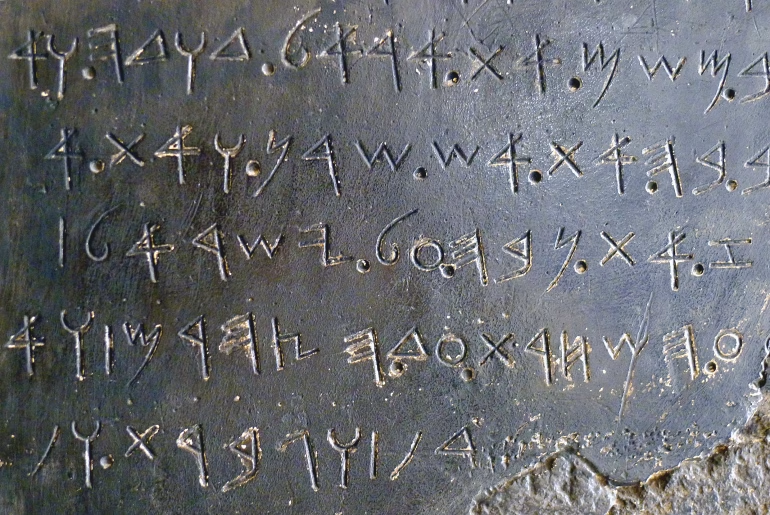In the realms of biblical scholarship and interfaith dialogue, few topics are as intriguing as the inconsistencies found within the sacred texts. A notable example of such an inconsistency is the differing descriptions of a Gentile woman in the Gospels of Matthew and Mark. While Matthew identifies her as a Canaanite, Mark describes her as a Syrophoenician Greek. This discrepancy is not a trivial matter, as it touches upon the fundamental issues of historical accuracy, cultural context, and theological intent within these foundational Christian texts.
This article aims to critically analyze these differences, exploring their implications for our understanding of the Gospels and the historical Jesus.
Historical Context and Textual Analysis
Matthew 15:22 : “And behold, a woman of Canaan came from that region and cried out to him, saying, “Have mercy on me, O Lord, Son of David ! My daughter is severely demon-possessed.”
Mark 7:26 : “The woman was a Greek and a Syrophoenician by nation ; and she besought him that he would cast forth the devil out of her daughter.”
The distinction between a “Canaanite” and a “Syrophoenician” is significant and cannot be overlooked. Canaan, as understood from historical sources including the Encyclopedia Britannica, refers to the ancient region encompassing present-day Israel, Palestine, and parts of Lebanon and Syria. In contrast, Syro-Phoenicia, a term that emerged during the Hellenistic and Roman periods, specifically refers to a part of ancient Phoenicia under the administration of Roman Syria.
This distinction is not merely geographical but also cultural and political. The term “Canaanite” harks back to a period predating significant Greek and Roman influence, while “Syrophoenician” reflects the cultural and political realities of a region under Hellenistic and later Roman influence.
Historical Inconsistencies in the Gospels
The variation in the ethnic description of the woman in the Gospel accounts raises questions about the historical accuracy of these texts. Such inconsistencies are not isolated instances in the biblical narrative. Scholars like Bart D. Ehrman, in his work “Misquoting Jesus,” have highlighted how discrepancies in the Gospels can reflect the complexities and challenges in their transmission and authorship.
From a critical perspective, the difference in the description of the woman’s ethnicity might suggest a broader issue of historical reliability. If the Gospel authors or later transcribers altered or misconstrued details like the ethnicity of a character, what does this say about the veracity of other aspects of their narratives ? This issue is particularly significant given the role of the Gospels as both historical documents and foundational texts of Christian faith.
Oversimplification of Cultural Identities
The Gospels’ varying descriptions of the woman’s ethnicity may also represent an oversimplification or misunderstanding of the complex cultural and ethnic dynamics of the region. The historical Canaan was a melting pot of various ethnicities and cultures, as documented in works like Israel Finkelstein and Neil Asher Silberman’s “The Bible Unearthed.” The term “Canaanite,” in a historical sense, does not refer to a homogeneous ethnic group but rather to a range of tribes and peoples inhabiting the region.
Similarly, the label “Syrophoenician” in Mark’s Gospel reflects a more Hellenized and Roman-influenced context, as Phoenicia at the time was part of the Roman province of Syria. This term implies a blend of local Phoenician culture with Syrian and Greek influences, a complexity that may not be fully captured in the Gospel narratives.
This oversimplification raises critical questions about the extent of historical and cultural understanding possessed by the Gospel writers. Were they using these terms with a precise understanding of their historical and cultural implications, or were they more loosely applying labels that were familiar to their respective audiences ? The answer to this question is crucial in assessing the historical credibility of the Gospel narratives.
Theological Agendas in the Gospel Narratives
The use of specific ethnic terms in the Gospels might also reflect theological agendas of the authors. John Dominic Crossan, in “The Historical Jesus,” suggests that Gospel writers often crafted their narratives to convey theological messages rather than purely historical accounts. In this context, Matthew’s use of “Canaanite” could be interpreted as an attempt to link the narrative to Old Testament themes and imagery, thereby resonating with a Jewish audience familiar with the historical enmity between Israelites and Canaanites.
Similarly, Mark’s designation of the woman as “Syrophoenician” might cater to a Gentile audience, possibly Roman, more attuned to the contemporary political and cultural realities of the region. This perspective implies that the Gospel narratives were tailored to suit the religious and cultural contexts of their intended audiences, potentially at the expense of historical accuracy.
This raises the question : To what extent were the Gospel writers willing to modify or reinterpret historical events to fit their theological objectives ? The implications of this are significant, as they touch upon the integrity of the Gospels as historical documents and their role as vehicles for theological teachings.
Audience-Specific Narratives and Textual Integrity
The possibility that the Gospel authors tailored their accounts to specific audiences suggests a degree of narrative flexibility that might challenge the integrity of these texts as historical documents. Bruce M. Metzger’s “The Text of the New Testament” sheds light on the transmission and variations in the New Testament manuscripts, highlighting how the Gospels underwent changes and adaptations over time.
If Matthew and Mark modified their narratives based on the cultural and religious backgrounds of their audiences, it could suggest that the Gospel accounts were subject to change based on external factors. This adaptability might be seen as a compromise in the portrayal of objective historical truth, raising questions about the overall consistency and reliability of the Christian scriptures.
Reconciling Historical and Theological Narratives
The challenge in reconciling the historical and theological aspects of the Gospel narratives is a central theme in biblical scholarship. The divergent descriptions of the Gentile woman in Matthew and Mark serve as a microcosm of this broader issue. While some discrepancies might be attributed to the different audiences and intentions of the Gospel writers, they nevertheless raise important questions about the nature of these texts as historical records.
From a historical-critical perspective, the Gospels must be examined not just as religious texts, but also as historical documents subject to the same scrutiny as other ancient writings. This scrutiny reveals complexities and nuances that might not be immediately apparent in a purely theological reading. The task then becomes one of discerning the historical Jesus amidst the theological narratives constructed by the Gospel writers, a task that requires careful analysis of the cultural, political, and historical context of the times.
Conclusion
The varying descriptions of the Gentile woman in the Gospels of Matthew and Mark highlight significant issues in biblical scholarship, particularly concerning historical accuracy, cultural context, and theological intent. These discrepancies invite a deeper examination of the Gospels, encouraging readers to consider the complex interplay of history, culture, and theology in these foundational Christian texts.
This analysis underscores the importance of a critical approach to biblical interpretation, one that acknowledges the historical and cultural milieu in which these texts were written. Such an approach not only enhances our understanding of the Gospels but also enriches our appreciation of the historical and cultural richness of the biblical narrative.
In Matthew 15:22, we are told that the Gentile woman who went and met Jesus in order to ask his help to cure her daughter was a Canaanite :
And behold, a woman of Canaan came from that region and cried out to him, saying, “Have mercy on me, O Lord, Son of David ! My daughter is severely demon-possessed.”
Canaan is the area now known as current-day Israel and the Occupied Palestinian Territories.[1]
However, Mark 7:26 informs us that the woman was from Syro-Phoenicia :
“The woman was a Greek and a Syrophenician by nation ; and she besought him that he would cast forth the devil out of her daughter.”
Phoenicia is a name of the area (current Lebanon, the area near Beirut) which was incorporated into the Roman province of Syria (hence the name Syro-Phoenicia). Syro-Phoenicia is in the southwest region, which includes not only the coastal Phoenicia but also the territory beyond the mountains and into the Syrian desert.[2]
Syro-Phoenicia and Canaan are miles apart and therefore cannot be the same nation. According to Mark, the woman was a Greek by birth from the nation of Syro-Phenicia, yet Matthew informs us that the same woman was from Canaan. Definately a contradiction here.




